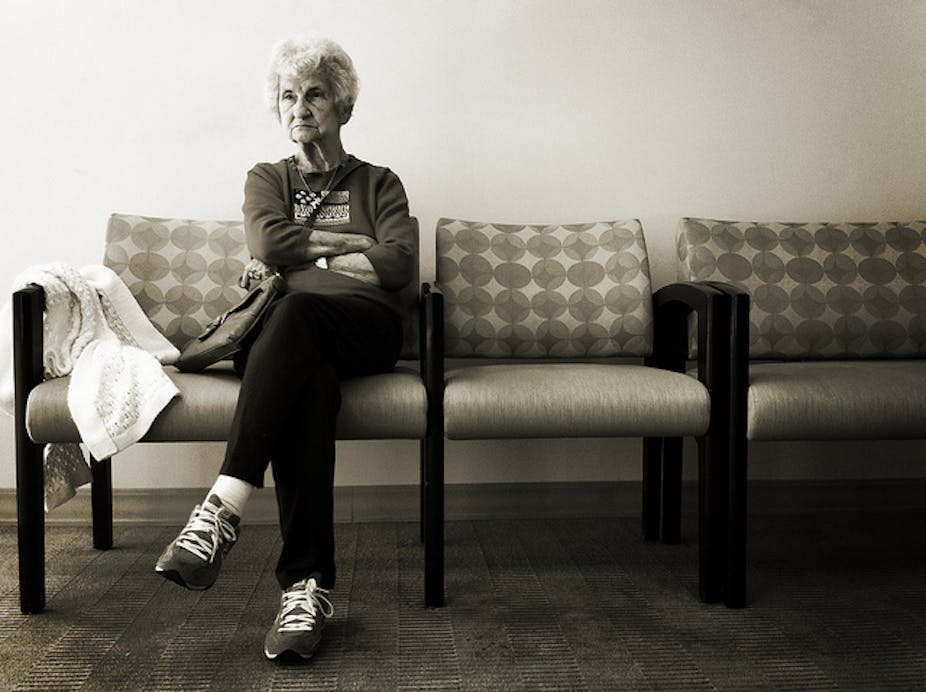A new Grattan Institute report released today, Access all areas, tells a mixed story about Australians’ access to general practitioners (GPs). The good news is access is getting better in many parts of Australia. The bad news is the progress is slowest where it’s needed most.
And if we continue with current policies, it will take 65 years before people in many parts of rural and remote Australia have the same level of access to general practitioner services as city dwellers do.
The facts are stark: residents in Mt Isa, for example, have access to 68 equivalent full time GPs per 100,000 people – about half the 120 available to the residents of Sydney’s eastern suburbs.
Access problems are real: people in rural and remote Australia wait longer and pay more out of their own pocket when they eventually get to see a GP. They are more likely to skip consultations because of costs and risk getting sicker before they get care.
Geographical inequality is also expensive for hospitals and taxpayers. When people in low access areas are admitted, they have higher costs for each admission.
Today’s report says enough is enough; a different approach could cut the wait for equitable access from 65 years to five.

The Commonwealth government has introduced dozens of schemes to try to address the rural access issue. But a recent government review found many of these were poorly targeted, most were unevaluated, and almost none had any solid evidence base.
Some initiatives seem to work and should continue, even though the pace is glacially slow. We need to expand the work of rural and remote area nurses, for instance. Nurse practitioners (nurses in advanced roles who can prescribe medication) have a critical role but despite decades of talk, there are fewer than 900 nurse practitioners in all Australia, many of whom work in cities.
But the Grattan Institute’s report suggests that if we are to make real progress we also need to try something new. The report focuses on just seven geographic areas that have the worst access to general practitioners and proposes reforms to get them to a basic standard of care.
Using GPs’ time better
About a fifth of all GP consultations are at the “less complex” end of the health care spectrum. Analysis of data from the Bettering the Evaluation and Care of Health (BEACH) Program, commissioned by the Grattan Institute, showed that in 19% of all GP consultations in 2011 only one condition was managed, there were no referrals to specialists or for diagnostic tests or imaging, no procedures other than vaccination were performed, and only one or two prescriptions were written.
The rate of less complex consultations was slightly lower in rural and remote areas where these types of conditions may have been squeezed out due to the pressure of other, more complex, cases.

The Grattan Institute’s report proposes that about a quarter of this “less complex” workload could be shifted to other professionals, freeing up GP time for other patients.
Use pharmacists
Although some parts of rural and remote Australia are short of pharmacists, many country towns have pharmacies that could almost certainly take on new roles. This spare capacity should be harnessed; in particular:
Pharmacists should be able to give vaccinations. About 5% of GP visits are for a vaccination with nothing else recorded during the visit. Pharmacists could undertake some of this workload.
With patient and GP consent, pharmacists could be authorised to issue and fill repeat prescriptions. These should be recorded in the patient’s personally controlled electronic health record.
Again with patient and GP consent, the pharmacist could take a greater role in managing medications for people with chronic conditions.
Pharmacists may require some additional training to take on these roles but they’ve got a good base already. They’d also have to be remunerated, Grattan estimates this would cost around A$4 million a year.
Use physician assistants
Queensland and South Australia have piloted the introduction of a new type of health professional: physician assistants. Initially the pilot recruited US-trained physician assistants but both the University of Queensland and James Cook University have delivered programs for local students in the past.
Physician assistants are unique because they practise under delegation from a medical practitioner. This means they can have a very broad range of functions, including diagnosis, treatment and referral, within the context of a general practice.

Physician assistants could be used to fill some of the GP gap at a cost of A$26 million a year.
The two Grattan proposals recognise the importance of team work in primary health care. They are designed to reduce the workload of over-stretched GPs, but in a way that keeps the GP’s central role in the care of his or her patients.
Is it affordable?
The total cost of the Grattan proposal (if implemented in 2011-12) would have been A$30 million a year. Earlier Grattan work has identified a potential source of savings in the high costs Australia pays for generic drugs. Savings could easily be found in some ineffective health workforce programs, too.
By reducing hospital admissions and costs, better access to GPs in rural and remote Australia may be financially smart, as well as more equitable.
One in 20 Australians lives in the areas Grattan identifies as providing very poor access to GP care. Current policies condemn them to remain so for another half century or more. We need to go further and faster to give these Australians a fair deal.

